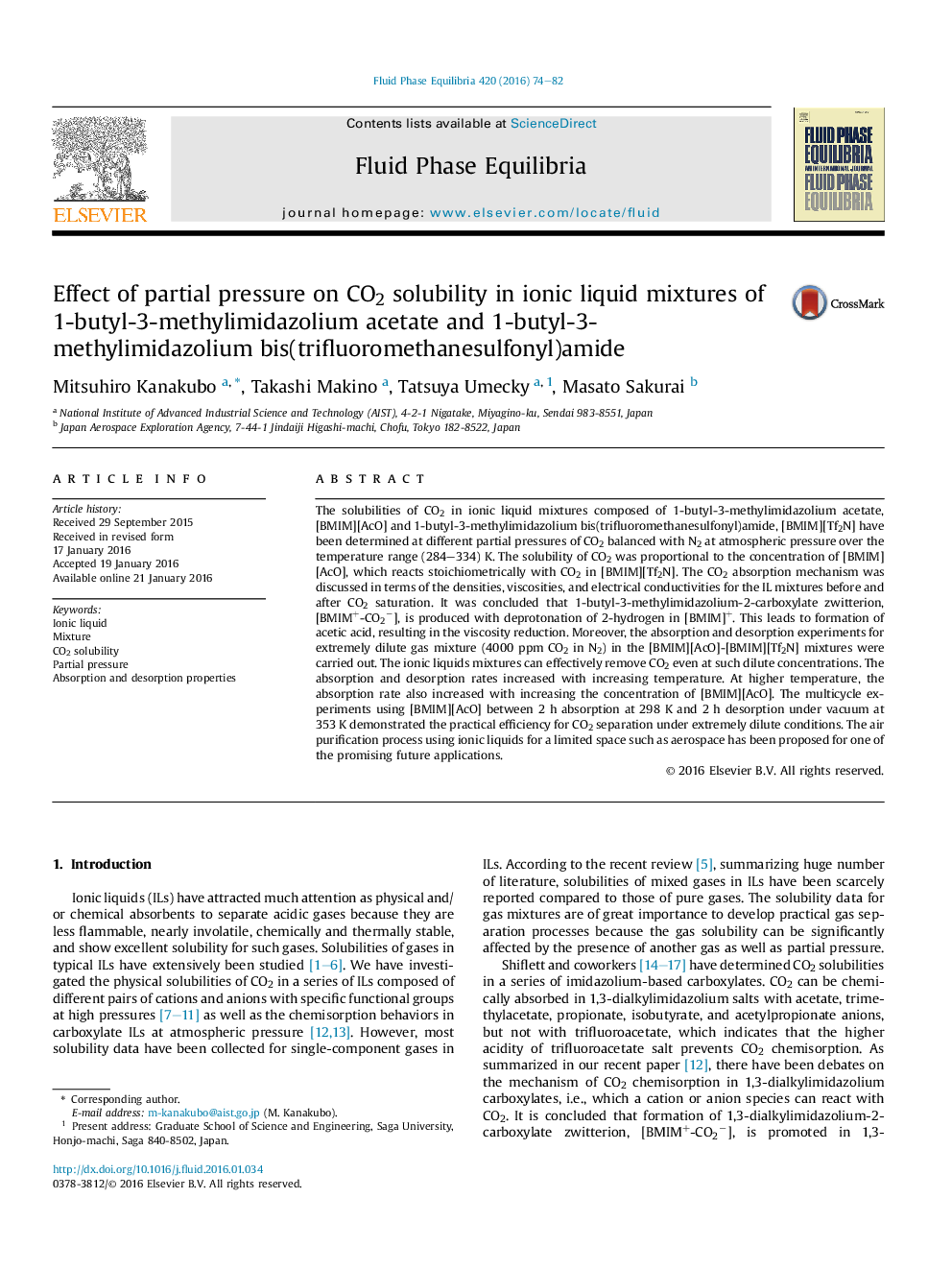| Article ID | Journal | Published Year | Pages | File Type |
|---|---|---|---|---|
| 201177 | Fluid Phase Equilibria | 2016 | 9 Pages |
The solubilities of CO2 in ionic liquid mixtures composed of 1-butyl-3-methylimidazolium acetate, [BMIM][AcO] and 1-butyl-3-methylimidazolium bis(trifluoromethanesulfonyl)amide, [BMIM][Tf2N] have been determined at different partial pressures of CO2 balanced with N2 at atmospheric pressure over the temperature range (284–334) K. The solubility of CO2 was proportional to the concentration of [BMIM][AcO], which reacts stoichiometrically with CO2 in [BMIM][Tf2N]. The CO2 absorption mechanism was discussed in terms of the densities, viscosities, and electrical conductivities for the IL mixtures before and after CO2 saturation. It was concluded that 1-butyl-3-methylimidazolium-2-carboxylate zwitterion, [BMIM+-CO2−CO2−], is produced with deprotonation of 2-hydrogen in [BMIM]+. This leads to formation of acetic acid, resulting in the viscosity reduction. Moreover, the absorption and desorption experiments for extremely dilute gas mixture (4000 ppm CO2 in N2) in the [BMIM][AcO]-[BMIM][Tf2N] mixtures were carried out. The ionic liquids mixtures can effectively remove CO2 even at such dilute concentrations. The absorption and desorption rates increased with increasing temperature. At higher temperature, the absorption rate also increased with increasing the concentration of [BMIM][AcO]. The multicycle experiments using [BMIM][AcO] between 2 h absorption at 298 K and 2 h desorption under vacuum at 353 K demonstrated the practical efficiency for CO2 separation under extremely dilute conditions. The air purification process using ionic liquids for a limited space such as aerospace has been proposed for one of the promising future applications.
